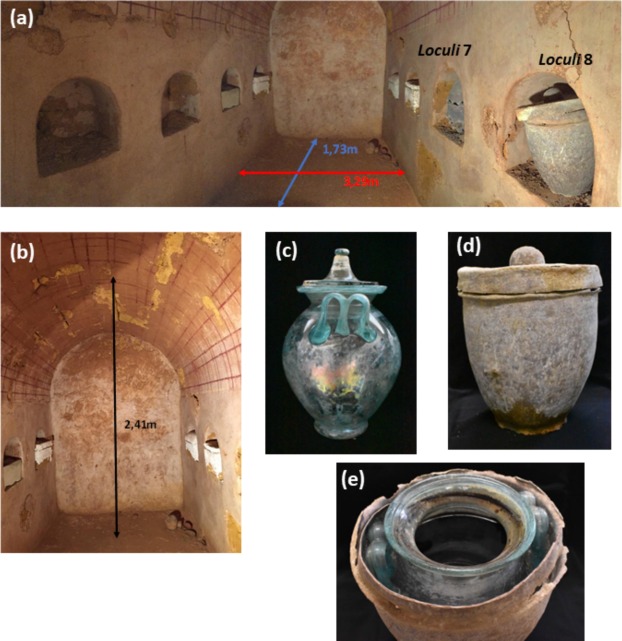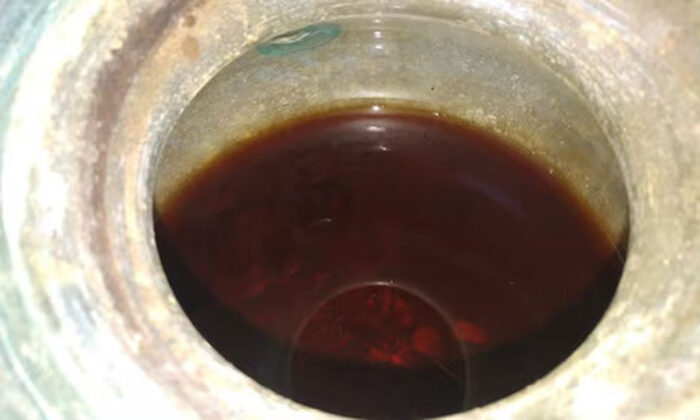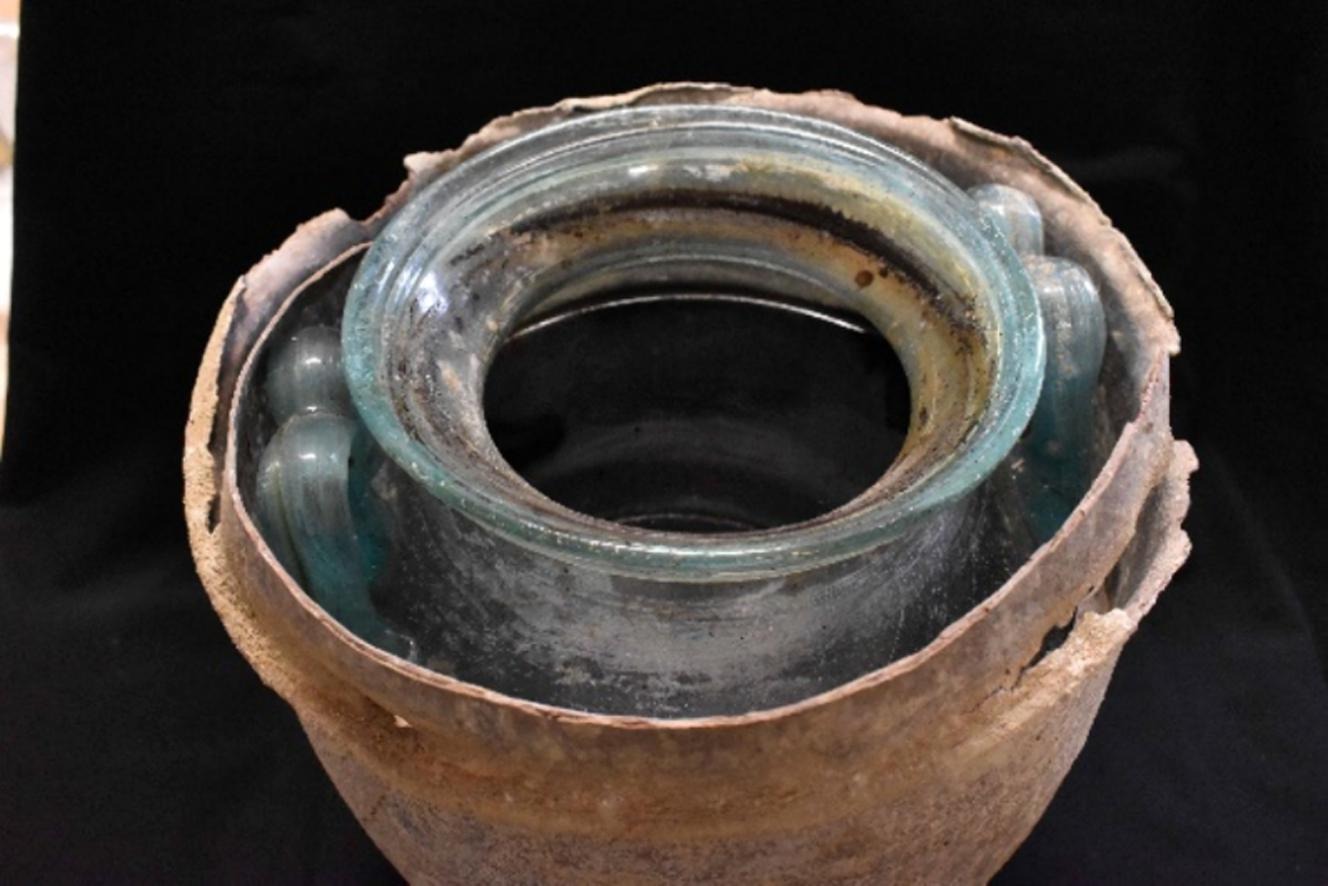There’s a new record for the world’s oldest liquid wine, discovered during home renovations in a necropolis in southern Spain.
Seville’s Carmona necropolis dates 2,000 years ago, to the first century AD. The ancient Roman Imperial site was one of Spain’s first necropolises (a cemetery belonging to an ancient city) opened to the public.
Until 2019, though, no one knew it contained the world’s oldest wine. That’s when construction workers renovating a family’s property unearthed a buried chamber that contained eight small, arch-shaped wall niches. Six of them contained one urn each, crafted from stoneware, glass, or lead.

a, b. Funeral chamber. c. Glass urn in niche 8. c. Lead case containing the urn. e. Reddish liquid contained in the urn. Photos: Cosano et al.
Five urns held ashes, bone fragments, and/or other objects typical of Roman funerals. But one, shaped from glass with elaborate handles, contained about five liters of a dark amber liquid. An archaeochemical testing team from the University of Córdoba later confirmed it was a time-honored party beverage.

Salud! Photo: Juan Manuel Román
“The wine turned out to be quite similar to wines from here in Andalucia: Montilla-Moriles; sherry-type wines from Jerez, and manzanilla from Sanlucar,” Jose Rafael Ruiz Arrebola, an organic chemist who led the analysis, told Arkeonews.
Although it didn’t look exactly white anymore, Arrebola’s team identified it as white wine using liquid chromatography and mass spectrometry. Specific polyphenols and a mineral salt profile convinced the team it was indeed white wine.
The stash outdates the world’s oldest unopened bottle of wine by around two centuries. The Speyer Wine Bottle is a 1.5-liter jug found in Germany in 1867, dating to between 325-359 AD.
Though the Carmona team noted the new wine’s impressive preservation due to ancient Roman techniques and climatic stability inside the tomb, they didn’t recommend drinking it. A single bottle of 1540-vintage Steinwein, housed in Germany’s Bürgerspital Winery, purports to be the world’s oldest drinkable wine. Bottles from the 1700s have fetched over $100,000.






